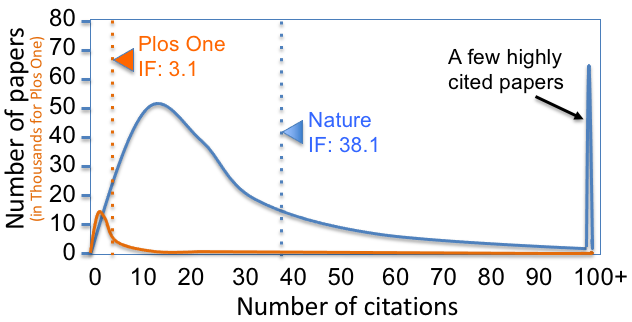|
Biofuels, Bioproducts And Biorefining
''Biofuels, Bioproducts and Biorefining'' () is a bimonthly peer-reviewed review and commentary journal published by John Wiley & Sons on behalf of the Society of Chemical Industry. The journal was established in 2007 and the editor in chief is Bruce E. Dale. According to the ''Journal Citation Reports'', the journal's 2020 impact factor The impact factor (IF) or journal impact factor (JIF) of an academic journal is a scientometric index calculated by Clarivate that reflects the yearly mean number of citations of articles published in the last two years in a given journal, as ... is 4.102. References External links * Wiley (publisher) academic journals Biotechnology journals Bimonthly journals Chemical industry in the United Kingdom Academic journals established in 2007 English-language journals {{sci-journal-stub ... [...More Info...] [...Related Items...] OR: [Wikipedia] [Google] [Baidu] |
Wiley (publisher)
John Wiley & Sons, Inc., commonly known as Wiley (), is an American multinational publishing company founded in 1807 that focuses on academic publishing and instructional materials. The company produces books, journals, and encyclopedias, in print and electronically, as well as online products and services, training materials, and educational materials for undergraduate, graduate, and continuing education students. History The company was established in 1807 when Charles Wiley opened a print shop in Manhattan. The company was the publisher of 19th century American literary figures like James Fenimore Cooper, Washington Irving, Herman Melville, and Edgar Allan Poe, as well as of legal, religious, and other non-fiction titles. The firm took its current name in 1865. Wiley later shifted its focus to scientific, technical, and engineering subject areas, abandoning its literary interests. Wiley's son John (born in Flatbush, New York, October 4, 1808; died in East Orange, New ... [...More Info...] [...Related Items...] OR: [Wikipedia] [Google] [Baidu] |
Society Of Chemical Industry
The Society of Chemical Industry (SCI) is a learned society set up in 1881 "to further the application of chemistry and related sciences for the public benefit". Offices The society's headquarters is in Belgrave Square, London. There are semi-independent branches in the United States, Canada and Australia. Aims The society aims to accelerate the rate of scientific innovations being commercialised by industry to benefit society. It does this through promoting collaborations between scientists and industrialists, running technical and innovation conferences, building communities across academia and industry and publishing scientific content through its journals and digital platforms. It also promotes science education. History On 21 November 1879, Lancashire chemist John Hargreaves canvassed a meeting of chemists and managers in Widnes, St Helens and Runcorn to consider the formation of a chemical society. Modelled on the successful Tyne Chemical Society already operating in Ne ... [...More Info...] [...Related Items...] OR: [Wikipedia] [Google] [Baidu] |
Peer Review
Peer review is the evaluation of work by one or more people with similar competencies as the producers of the work ( peers). It functions as a form of self-regulation by qualified members of a profession within the relevant field. Peer review methods are used to maintain quality standards, improve performance, and provide credibility. In academia, scholarly peer review is often used to determine an academic paper's suitability for publication. Peer review can be categorized by the type of activity and by the field or profession in which the activity occurs, e.g., medical peer review. It can also be used as a teaching tool to help students improve writing assignments. Henry Oldenburg (1619–1677) was a German-born British philosopher who is seen as the 'father' of modern scientific peer review. Professional Professional peer review focuses on the performance of professionals, with a view to improving quality, upholding standards, or providing certification. In academia, ... [...More Info...] [...Related Items...] OR: [Wikipedia] [Google] [Baidu] |
Review Journal
A review article is an article that summarizes the current state of understanding on a topic within a certain discipline. A review article is generally considered a secondary source since it may analyze and discuss the method and conclusions in previously published studies. It resembles a survey article or, in news publishing, overview article, which also surveys and summarizes previously published primary and secondary sources, instead of reporting new facts and results. Survey articles are however considered tertiary sources, since they do not provide additional analysis and synthesis of new conclusions. A review of such sources is often referred to as a tertiary review. Academic publications that specialize in review articles are known as review journals. Review journals have their own requirements for the review articles they accept, so review articles may vary slightly depending on the journal they are being submitted to. Review articles teach about: * the main peop ... [...More Info...] [...Related Items...] OR: [Wikipedia] [Google] [Baidu] |
Editor In Chief
An editor-in-chief (EIC), also known as lead editor or chief editor, is a publication's editorial leader who has final responsibility for its operations and policies. The highest-ranking editor of a publication may also be titled editor, managing editor, or executive editor, but where these titles are held while someone else is editor-in-chief, the editor-in-chief outranks the others. Description The editor-in-chief heads all departments of the organization and is held accountable for delegating tasks to staff members and managing them. The term is often used at newspapers, magazines, yearbooks, and television news programs. The editor-in-chief is commonly the link between the publisher or proprietor and the editorial staff. The term is also applied to academic journals, where the editor-in-chief gives the ultimate decision whether a submitted manuscript will be published. This decision is made by the editor-in-chief after seeking input from reviewers selected on the basis of ... [...More Info...] [...Related Items...] OR: [Wikipedia] [Google] [Baidu] |
Journal Citation Reports
''Journal Citation Reports'' (''JCR'') is an annual publicationby Clarivate Analytics (previously the intellectual property of Thomson Reuters). It has been integrated with the Web of Science and is accessed from the Web of Science-Core Collections. It provides information about academic journals in the natural sciences and social sciences Social science is one of the branches of science, devoted to the study of society, societies and the Social relation, relationships among individuals within those societies. The term was formerly used to refer to the field of sociology, the o ..., including impact factors. The ''JCR'' was originally published as a part of '' Science Citation Index''. Currently, the ''JCR'', as a distinct service, is based on citations compiled from the '' Science Citation Index Expanded'' and the '' Social Sciences Citation Index''.- - - Basic journal information The information given for each journal includes: * the basic bibliographic information ... [...More Info...] [...Related Items...] OR: [Wikipedia] [Google] [Baidu] |
Impact Factor
The impact factor (IF) or journal impact factor (JIF) of an academic journal is a scientometric index calculated by Clarivate that reflects the yearly mean number of citations of articles published in the last two years in a given journal, as indexed by Clarivate's Web of Science. As a journal-level metric, it is frequently used as a proxy for the relative importance of a journal within its field; journals with higher impact factor values are given the status of being more important, or carry more prestige in their respective fields, than those with lower values. While frequently used by universities and funding bodies to decide on promotion and research proposals, it has come under attack for distorting good scientific practices. History The impact factor was devised by Eugene Garfield, the founder of the Institute for Scientific Information (ISI) in Philadelphia. Impact factors began to be calculated yearly starting from 1975 for journals listed in the ''Journal Citatio ... [...More Info...] [...Related Items...] OR: [Wikipedia] [Google] [Baidu] |
Wiley (publisher) Academic Journals
Wiley may refer to: Locations * Wiley, Colorado, a U.S. town * Wiley, Pleasants County, West Virginia, U.S. * Wiley-Kaserne, a district of the city of Neu-Ulm, Germany People * Wiley (musician), British grime MC, rapper, and producer * Wiley Miller, pen name of American newspaper cartoonist David Wiley Miller As a given name * Wiley Brooks (1936–2016), founder of the Breatharian Institute of America * Wiley Young Daniel, American judge * Wiley Nickel, American politician * Wiley Post (1898–1935), American aviator, the first person to fly solo around the world * Wiley Rutledge (1894–1949), American jurist, Supreme Court justice * Wiley Scribner (1840–1889), American politician * Wiley Wiggins, American game designer and actor As a surname * Alan Wiley, British football referee * Alexander Wiley, U.S. Senator * Austin Wiley, American basketball player * Autrey Nell Wiley, American literary critic * Cliff Wiley, American track and field athlete * Charles Wiley, Amer ... [...More Info...] [...Related Items...] OR: [Wikipedia] [Google] [Baidu] |
Biotechnology Journals
Biotechnology is the integration of natural sciences and engineering sciences in order to achieve the application of organisms, cells, parts thereof and molecular analogues for products and services. The term ''biotechnology'' was first used by Károly Ereky in 1919, meaning the production of products from raw materials with the aid of living organisms. Definition The concept of biotechnology encompasses a wide range of procedures for modifying living organisms according to human purposes, going back to domestication of animals, cultivation of the plants, and "improvements" to these through breeding programs that employ artificial selection and hybridization. Modern usage also includes genetic engineering as well as cell and tissue culture technologies. The American Chemical Society defines biotechnology as the application of biological organisms, systems, or processes by various industries to learning about the science of life and the improvement of the value of materials an ... [...More Info...] [...Related Items...] OR: [Wikipedia] [Google] [Baidu] |
Bimonthly Journals
{{Short pages monitor ... [...More Info...] [...Related Items...] OR: [Wikipedia] [Google] [Baidu] |
Chemical Industry In The United Kingdom
The chemical industry in the United Kingdom is one of the UK's main manufacturing industries. At one time, the UK's chemical industry was a world leader. The industry has also been environmentally damaging, and includes radioactive nuclear industries. History Sir William Henry Perkin FRS discovered the first synthetic dye mauveine in 1856, produced from aniline, having tried to synthesise quinine at his home on Cable Street in east London. Perkin's work, alone, led the way to the British chemical industry. 21% of the UK's chemical industry is in North West England, notably around Runcorn and Widnes. The chemical industry is 6.8% of UK manufacturing; around 85% of the UK chemical industry is in England. It employs 500,000, including 350,000 indirectly. It accounts for around 20% of the UK's research and development. Output In 2015, the UK chemical industry exported £50bn of products. The industry employs about 30,000 in research and development. Regulation Regulation o ... [...More Info...] [...Related Items...] OR: [Wikipedia] [Google] [Baidu] |
Academic Journals Established In 2007
An academy ( Attic Greek: Ἀκαδήμεια; Koine Greek Ἀκαδημία) is an institution of secondary or tertiary higher learning (and generally also research or honorary membership). The name traces back to Plato's school of philosophy, founded approximately 385 BC at Akademia, a sanctuary of Athena, the goddess of wisdom and skill, north of Athens, Greece. Etymology The word comes from the ''Academy'' in ancient Greece, which derives from the Athenian hero, ''Akademos''. Outside the city walls of Athens, the gymnasium was made famous by Plato as a center of learning. The sacred space, dedicated to the goddess of wisdom, Athena, had formerly been an olive grove, hence the expression "the groves of Academe". In these gardens, the philosopher Plato conversed with followers. Plato developed his sessions into a method of teaching philosophy and in 387 BC, established what is known today as the Old Academy. By extension, ''academia'' has come to mean the accumulation, de ... [...More Info...] [...Related Items...] OR: [Wikipedia] [Google] [Baidu] |






